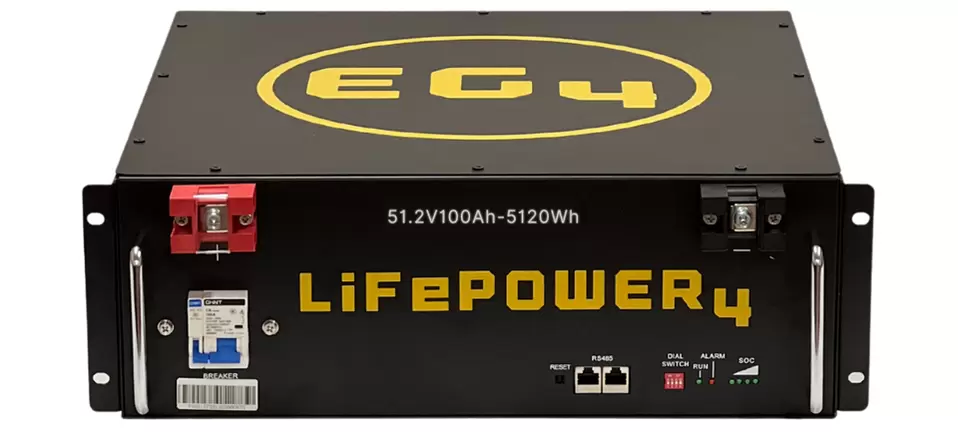David Collins
New Member
- Joined
- Sep 15, 2022
- Messages
- 21
New member, designing an off grid system for a weekend use cabin. Questions on what unforeseen issues I might be faced with when mixing systems rather than staying within one manufacturer.
The constant I’m committed to is 12 SunTech 275w 24v roof mounted panels. 2.5-5kWh battery capacity will be suitable, and we do not plan on running more than a single 120vac 20a circuit. My priorities are -
#1 - Safety. This is an off grid occasional weekend use cabin in the middle of Michigan woods, and a fire could in a worst case scenario mean dozens of acres ablaze before anyone noticed. And the system will be inside the cabin. I can handle all the proper gauging, calculations, fire protection, fuses and switches, crimps and connections, but need reliable components as well, with lowest history/risk of internal failures.
#2 - Noise. I want as silent a system as possible, with no fans running unless we’re actually drawing enough current to warrant it. Fans running while we are using a vacuum or coffee pot is inevitable, but I’d like to avoid fans on the charge controller, or when we’re running 50 watts of lightbulbs.
#3 - Low Maintenance. After initial setup, I would like to monitor, maintain, or even think about the system as little as absolutely possible.
#4 - Cost. I’ll pay for quality, but do not have an unlimited budget, and want to get the best value within the constraints of priorities 1-3.
My dilemma is that the Eg4 LiFePower batteries seem too good to pass up, ($1500 for 5kwh 48v, compared to $1030 for an SOK 2.5kWh 24v), but the Eg4 3000k All In One appears to fail my noise priorities from what I’ve heard. Therefore I’m considering a fan-less Victron 250/60 charge controller, and probably a Xijia 3000w pure sine inverter (the Victron batteries and inverters are a bit high for my budget), which seems to have a good design for not running the fans more than it needs. This combination will cost more and be a more complicated setup than using the Eg4 3000w all in one, but is worth it to me for the noise factor.
My question then is, am I shooting myself in the foot on priority #4 (low maintenance, good self regulation) by choosing a charger, inverter, and BMS which cannot communicate with each other? What will such an arrangement be missing, and what vulnerabilities for problems or increased maintenance might this expose me to?
Thank you in advance for any insights, warnings, tips, or alternatives you may have to offer.
The constant I’m committed to is 12 SunTech 275w 24v roof mounted panels. 2.5-5kWh battery capacity will be suitable, and we do not plan on running more than a single 120vac 20a circuit. My priorities are -
#1 - Safety. This is an off grid occasional weekend use cabin in the middle of Michigan woods, and a fire could in a worst case scenario mean dozens of acres ablaze before anyone noticed. And the system will be inside the cabin. I can handle all the proper gauging, calculations, fire protection, fuses and switches, crimps and connections, but need reliable components as well, with lowest history/risk of internal failures.
#2 - Noise. I want as silent a system as possible, with no fans running unless we’re actually drawing enough current to warrant it. Fans running while we are using a vacuum or coffee pot is inevitable, but I’d like to avoid fans on the charge controller, or when we’re running 50 watts of lightbulbs.
#3 - Low Maintenance. After initial setup, I would like to monitor, maintain, or even think about the system as little as absolutely possible.
#4 - Cost. I’ll pay for quality, but do not have an unlimited budget, and want to get the best value within the constraints of priorities 1-3.
My dilemma is that the Eg4 LiFePower batteries seem too good to pass up, ($1500 for 5kwh 48v, compared to $1030 for an SOK 2.5kWh 24v), but the Eg4 3000k All In One appears to fail my noise priorities from what I’ve heard. Therefore I’m considering a fan-less Victron 250/60 charge controller, and probably a Xijia 3000w pure sine inverter (the Victron batteries and inverters are a bit high for my budget), which seems to have a good design for not running the fans more than it needs. This combination will cost more and be a more complicated setup than using the Eg4 3000w all in one, but is worth it to me for the noise factor.
My question then is, am I shooting myself in the foot on priority #4 (low maintenance, good self regulation) by choosing a charger, inverter, and BMS which cannot communicate with each other? What will such an arrangement be missing, and what vulnerabilities for problems or increased maintenance might this expose me to?
Thank you in advance for any insights, warnings, tips, or alternatives you may have to offer.
Last edited:



